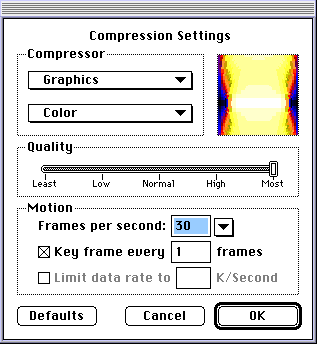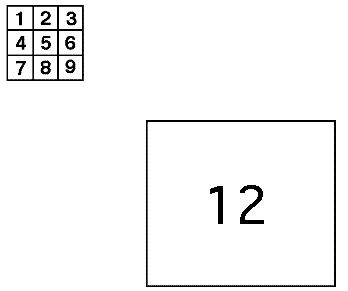
Software: Macromedia Director and QuickTime.
Comment: Compatible only with older Lingo scripting
language.
Step one is to create the movies properly. They both must be created using the same settings.
Let's assume that you already have the series of images that you wish to navigate through. Lets also assume that this series is in an NxM matrix arrangement, numbered in such a way that the frame number of the first image of the second row is N+1, the second image in the second row is N+2, the first image in the third row is 2N+1, etc.
Create the QuickTime movie.

When creating the movie choose the number of Frames per second such that 60 is evenly divisible by it (i.e. choose either 10,15, or 30), and set the Key Frames at 1. You can use any of the compression schemes that you wish.
Open MacroMind Director.
Set up your stage, as shown below.

A sprite corresponds to a object on the stage. In this case, sprite 1-10 are control sprites and sprites 11 and 12 are QuickTime movies.
The objects in sprite channels 1-9 are boxes and their edges are just touching. Depending on how you want your controls for the movie arranged the sizes of your boxes will vary. I generally prefer that the boxes are the same size. Sprite 10 completely encloses 1-9 with no overlap. Sprite 11 is laid directly overtop of sprite 10.
Note: Sprite channel numbers 1-10 are in ghost ink.
Now, let's examine the scripts (score and lingo). Everything in bold will be comments.
Plain English explanation, hopefully.
 Click image to return to Visualization home page.
Click image to return to Visualization home page.
http://www.sv.vt.edu/classes/ESM4714/exercises/exer17/exer17.html